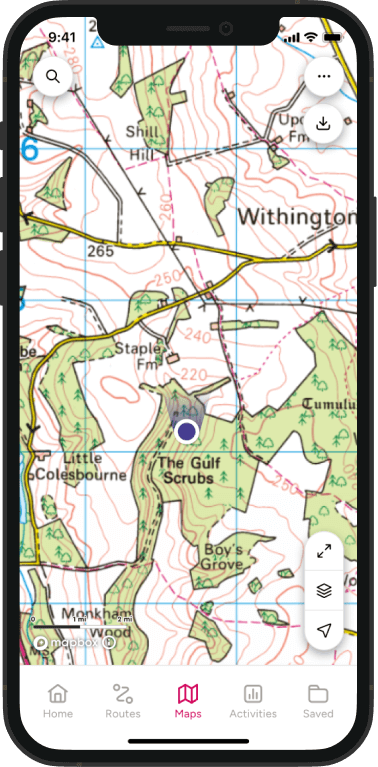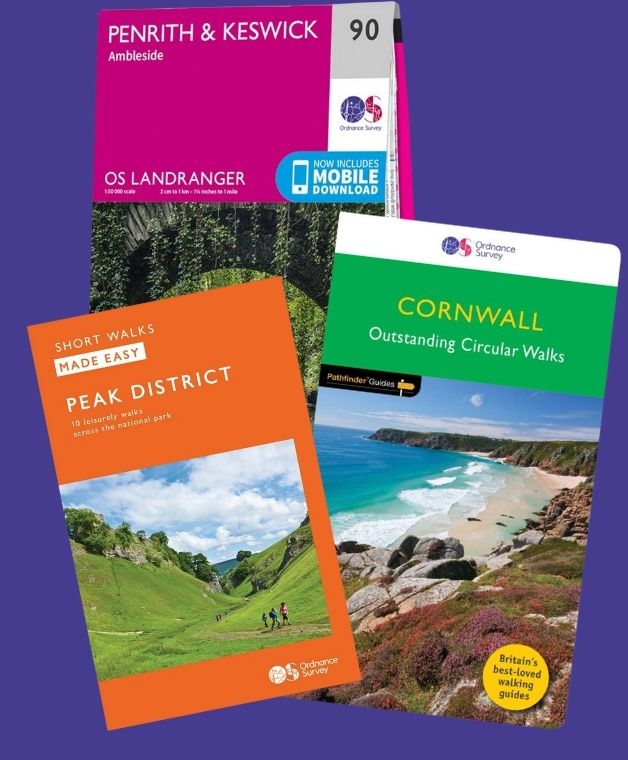How to treat and prevent common outdoor injuries
Whatever adventure you decide to take, a basic knowledge of outdoor first aid will help keep you safe. Alistair Morris, Medical Director at Mountain Rescue England and Wales, explains how to deal with the most common outdoor injuries.
Whether it is a short walk or run in the outdoors or a longer multiday expedition, you’ll want to enjoy it to the maximum without accident and injury. However, these things do happen from time to time, so carrying a few items of basic first aid and knowing how to use them can you keep moving and return home safe.
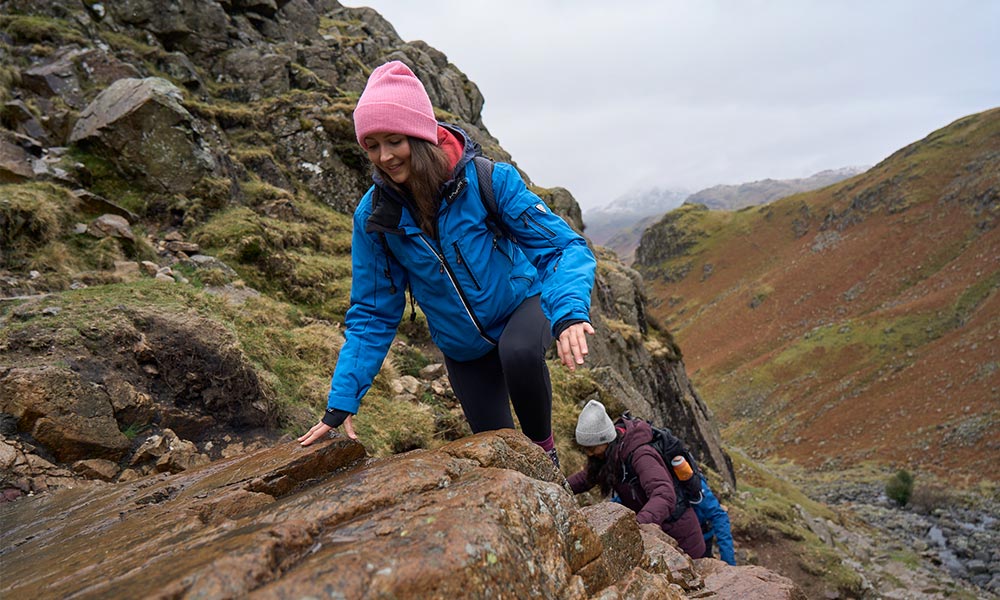
I often get asked what I carry in my first aid kit, however being a Mountain Rescue doctor, I am probably not the best person for advice as will often carry kit for others. Saying that, I have many years of experience in adventure racing, overseas expeditions and mountaineering in the UK and abroad where minimum weight is vital. I will always take at least the basics to treat the minor things and keep me moving. I always make sure what I carry is multifunction with a range of uses.
Prevention is better than cure
As with most things in the outdoors, prevention is often better than cure – make sure you check the forecast (The Mountain Weather Information Service is a good resource) and that the clothing you are wearing and carrying are suitable for the forecast. Always have some extras in case you have to stop due to injury – runners are particularly at risk as they have a high activity level, minimal clothing and want to carry as little as possible.
Comfortable outdoor boots or shoes that are well worn in should provide ankle protection and grip on wet slippery mud and rock – by far the majority of callouts Mountain Rescue teams attend are for lower limb injuries due to slips and trips. If you are not used to walking on rough ground one or two walking poles or sticks are a useful addition to help give you balance on uneven ground.
Cuts, grazes, stings and blisters
You don’t want a good day in the hills to be blighted by a minor injury. For cuts, grazes and blisters you should be able to clean, dry and have some dressings to cover. I carry a range of dressings of different sizes from plasters to self-adherent dressings and some gauze and tape. Your drinking water is sufficient to clean the injury, dry with the gauze and then apply a dressing. If the bleeding is more perfuse then the gauze can be held on with pressure for 10-15 minutes and then taped on. Don’t be tempted to keep looking to check if the bleeding has stopped as this will disrupt the clot and restart the bleeding. If it soaks through the gauze add another one on top and keep the pressure on.
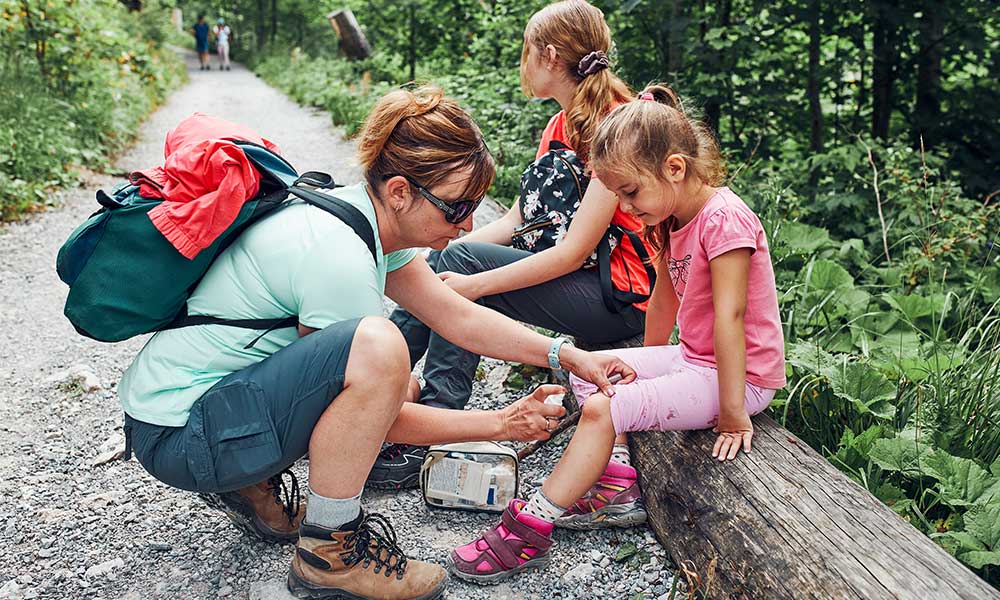
Stings are mostly an annoyance – unless you react badly to them. Carrying a couple of tablets over the counter antihistamine tablets and if you have a risk of anaphylaxis then also your adrenaline autojectors. Otherwise, there is little direct treatment.
Blisters are most commonly due to ill-fitting boots or socks. If your feet get wet there is an increased risk as the skin becomes more fragile. Blisters have been enough to end expeditions so don’t take them lightly. As I have said, prevention is better than cure – get used to your boots / sock combination at home and wear them in. As soon as you start feeling a rub or hot spot, stop, check it and if necessary put some tape or dressing over the area. Once a blister is present, clean and dress as best you can to prevent getting worse.
What to carry:
- Variety of dressings from small plasters to large self adherent dressings
- Tape – micropore or similar
- Gauze swabs
- Antihistamines
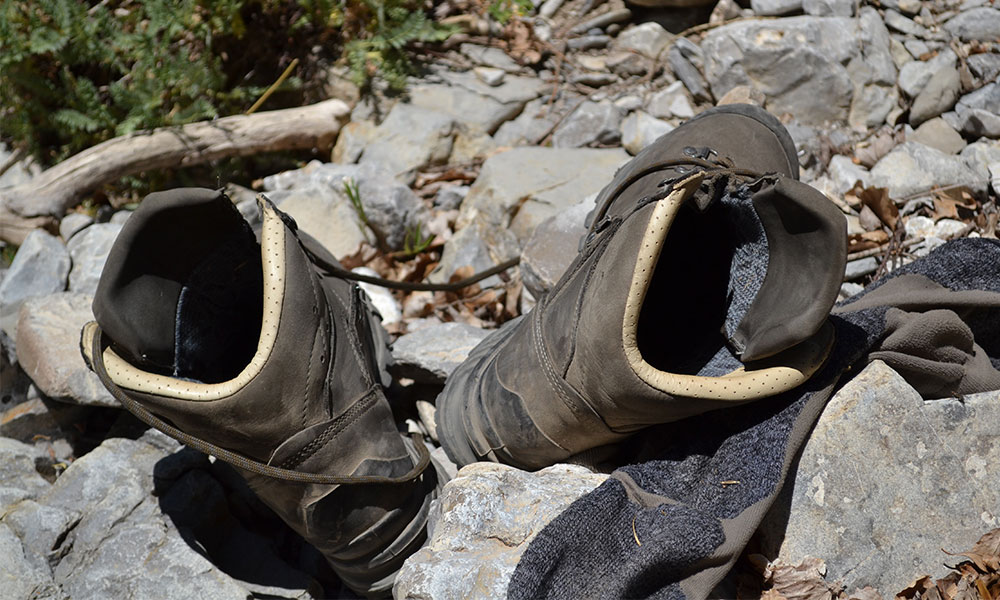
Sprains, strains, fractures
These can be enough to stop your day and need a rescue, however there are many that can be treated enough to keep you moving and warm or at least to reduce pain and discomfort whilst awaiting rescue. Most sprains and strains should not stop you putting weight on the affected limb, if you cannot weight bear a fracture is more likely. Typically at home the advice is rest, ice, compression and elevation – this is not possible in the outdoor environment other than finding an handy mountain stream. Compression and strapping is possible for which I carry a ‘cohesive’ bandage. This sticks to itself but not the skin. They are often used by vets to strap animal’s legs for injuries and are cheap from farm supply shops. They do not need safety pins etc., which are hard to use in the cold and wet with gloves on.
Beyond that, if the injury needs splinting there are options in the kit we are carrying – foam padding, walking poles or even wooden sticks (pad them to sure they are not pressing onto the skin risking pressure sores). If you are going out regularly the SAM splint is an excellent light weight and multifunctional piece of kit that can splint most things and more. There are good websites with lots of information. The cohesive bandage or tape can be used to hold in place.
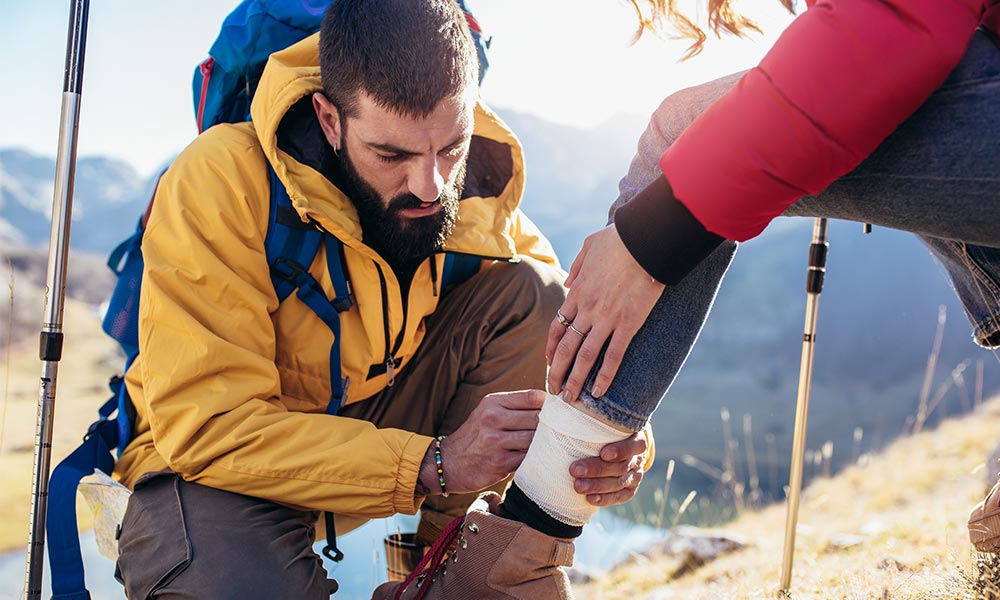
Splinting helps relieve the pain of a fracture by stopping the movement at the break. Fractured fingers and toes can be taped to the adjoining finger or toe. You may want to carry a couple of tablets of simple over the counter pain relief such as paracetamol and ibuprofen to help with the pain.
Upper limb sprains and breaks can be splinted and then the arm held in a sling – this can be a triangular bandage (which can be used for lots of other things too) or simply a strap from a rucksack or a bum bag over the shoulder works really well. Look at the kit you have and adapt it.
What to carry:
- Cohesive Bandage
- Triangular Bandage
- Paracetamol and Ibuprofen
- (SAM Splint)
Keeping warm
As soon as you stop you will start cooling down, especially if you are wet or have been working hard and sweating. The UK is particularly good for wet and windy weather which are the best for cooling off. The risk of hypothermia is real and Mountain Rescue teams will treat all casualties as cold. Minor injuries can escalate into full rescues if the injured person gets cold – if minor, treating the injury and keeping moving is often the best course of action. Getting just a little bit cold with major trauma is known to a big impact on your survival. Therefore, be prepared.
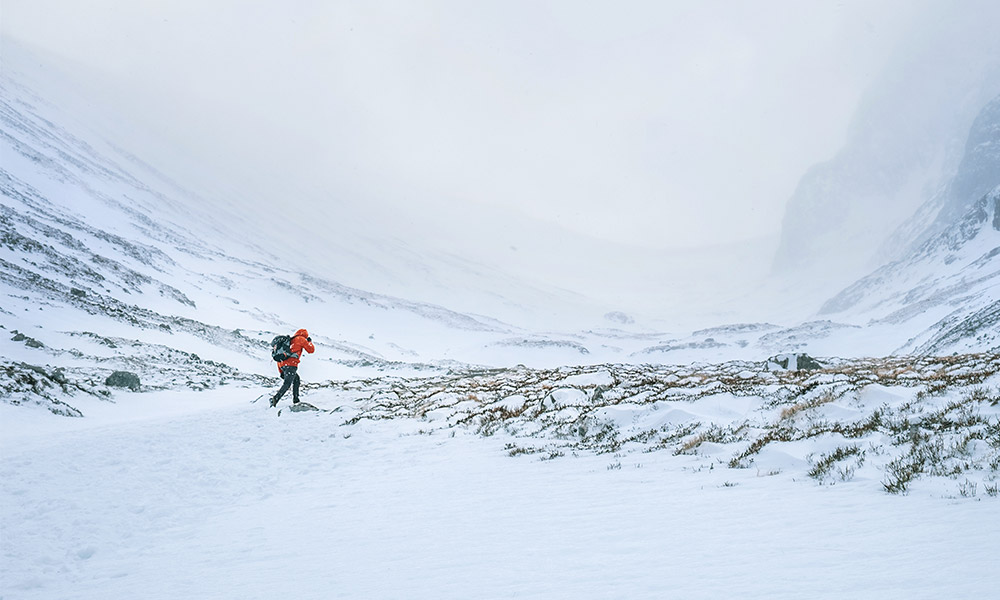
You have already checked the forecast (either MWIS or apps such as MeteoBlue which will give temperatures and wind chill on the summits of mountains) and have packed extra spare clothes, hats and gloves. A huge amount of heat is lost through the head.
Once you have stopped from an injury it is important to keep warm – so act quickly. It is easier to keep warm then to allow yourself to get cold and then need to rewarm. Get some insulation under you to keep you off the wet ground (sit on rucksack or clothing if not wearing). Put on extra clothes and hats / gloves from the group. Foil blankets / bags help reduce radiation and evaporation but on a windy hillside can be troublesome – wrap one around your body then put a jacket over the top. Personally, I would go for a bag rather than a blanket as does a better job of sealing the warm air inside.
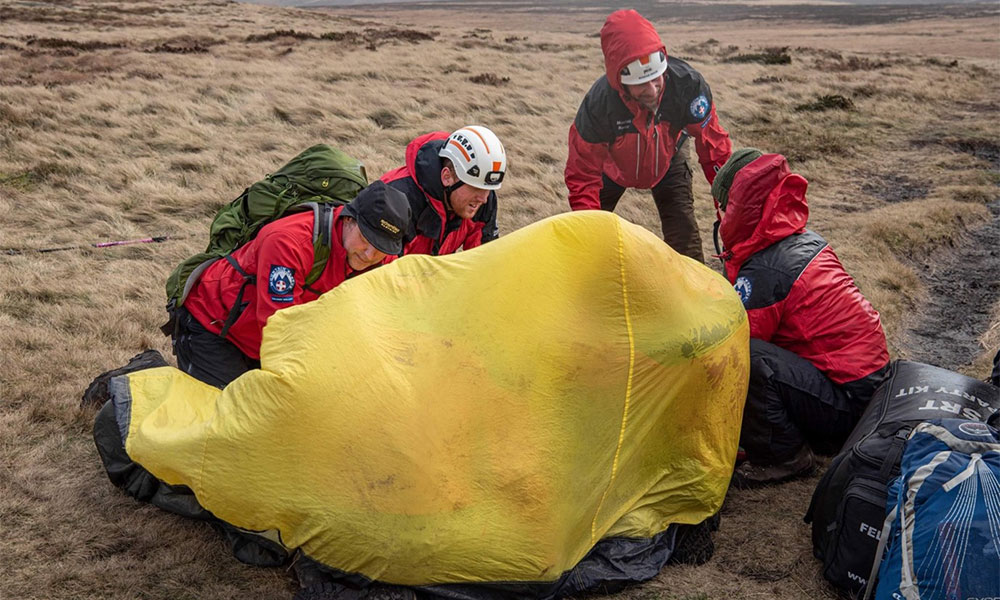
The single best piece of kit (that all MR teams carry) is the emergency shelter. This is a simple shaped piece of lightweight fabric that can be pulled over the person / group like a tent. It keeps the wind off, and the air inside warms quickly (especially with more than one person inside). They are not expensive, pack small and I rarely head out without one.
Generating heat requires fuel – so ensure the injured person continues to have some sugary food / fluids to help produce that heat – especially if shivering. Shivering is a very effective way of generating heat but uses lots of energy.
What to carry:
- Foil / survival bag
- Emergency Shelter
- Sugary food / sweets / glucose tablets.




